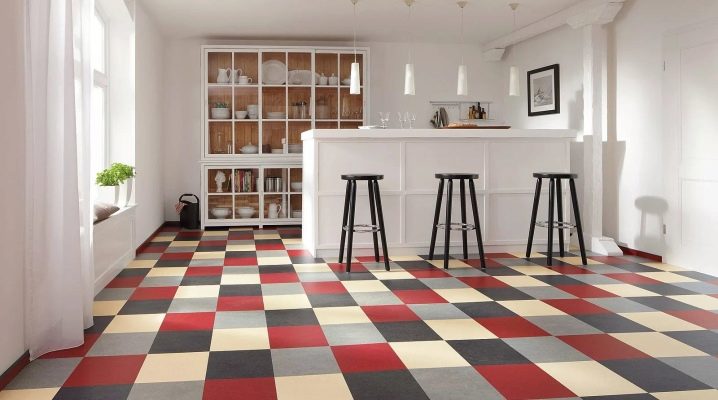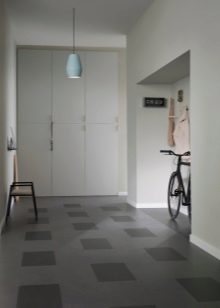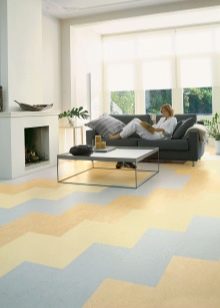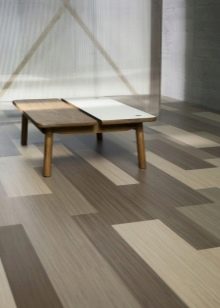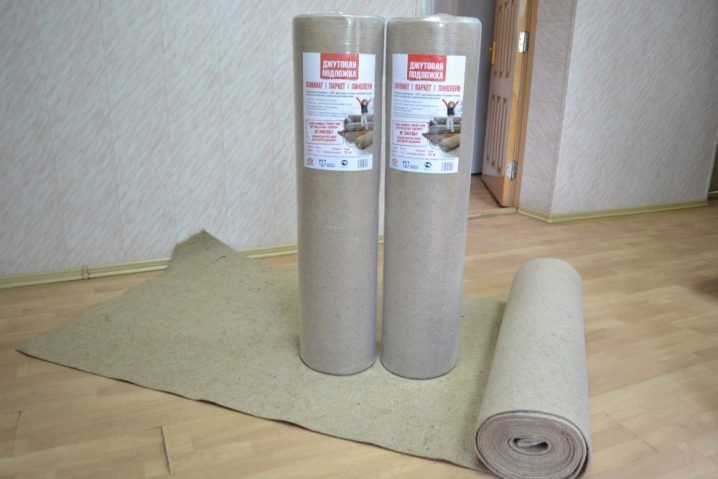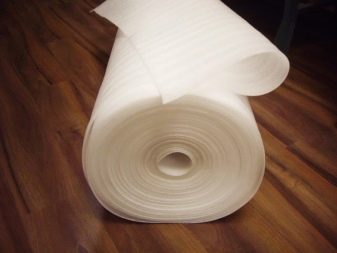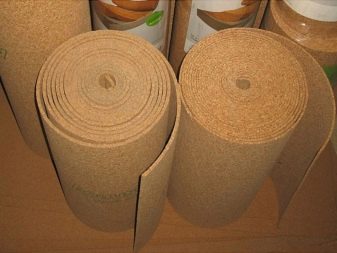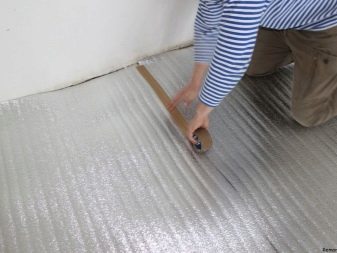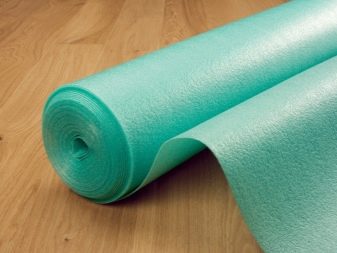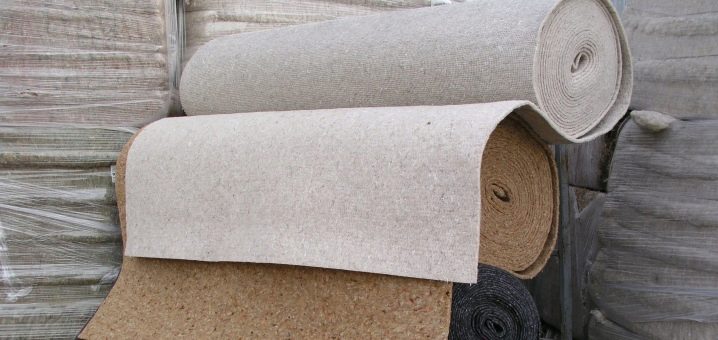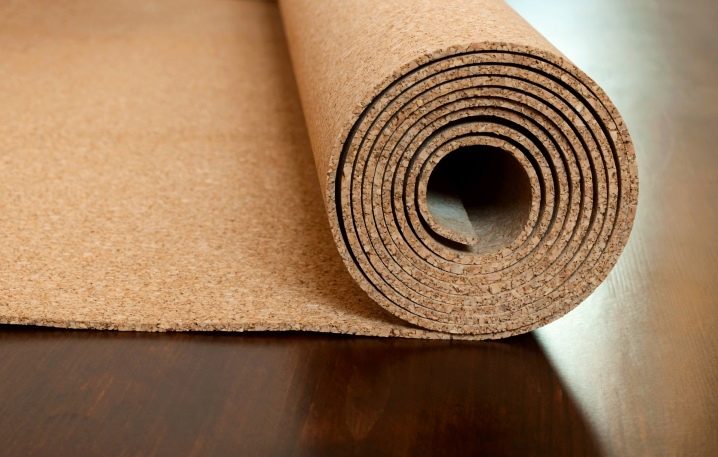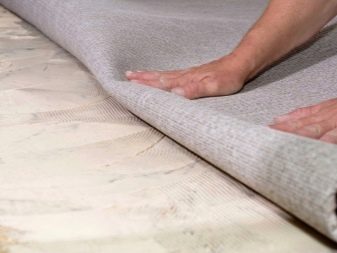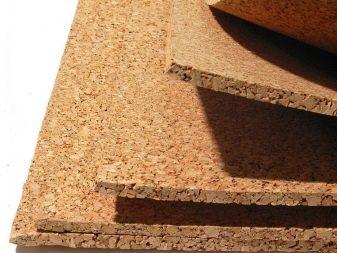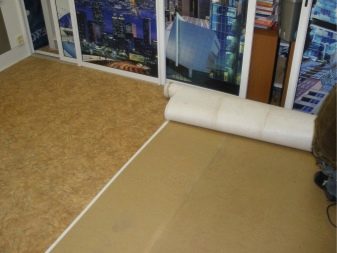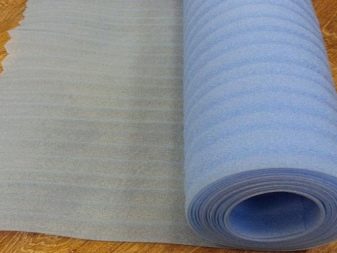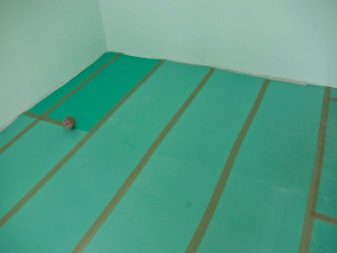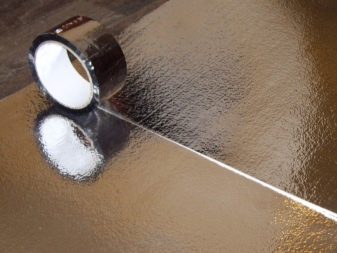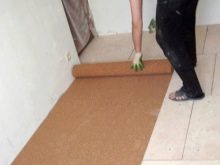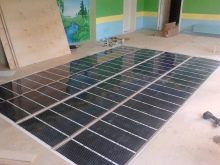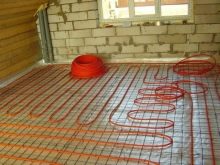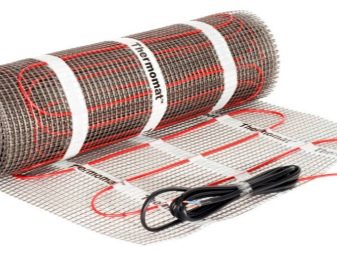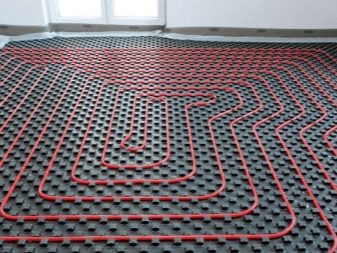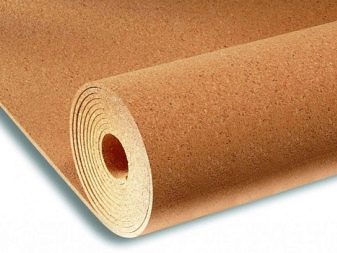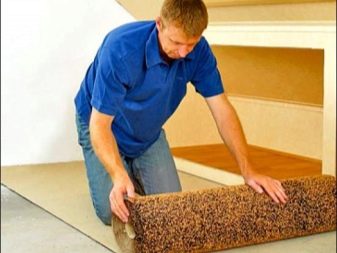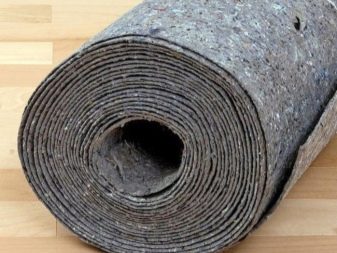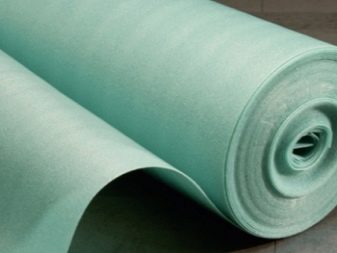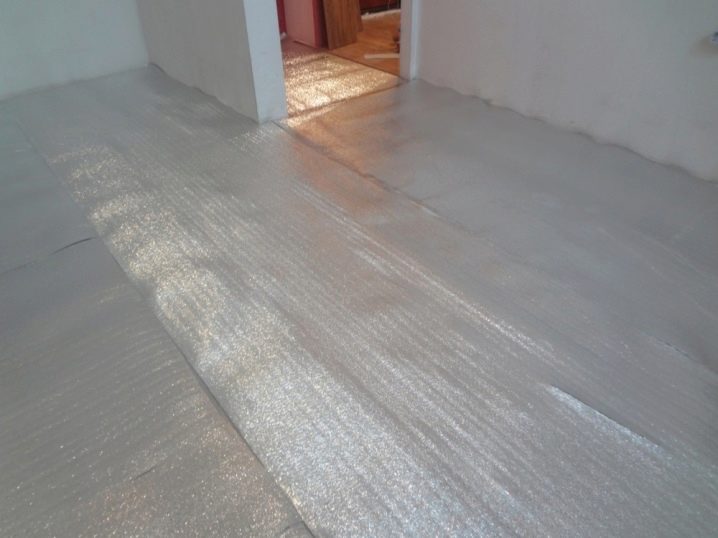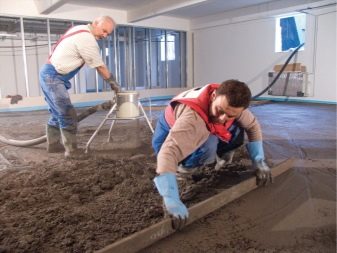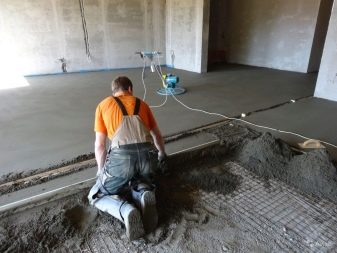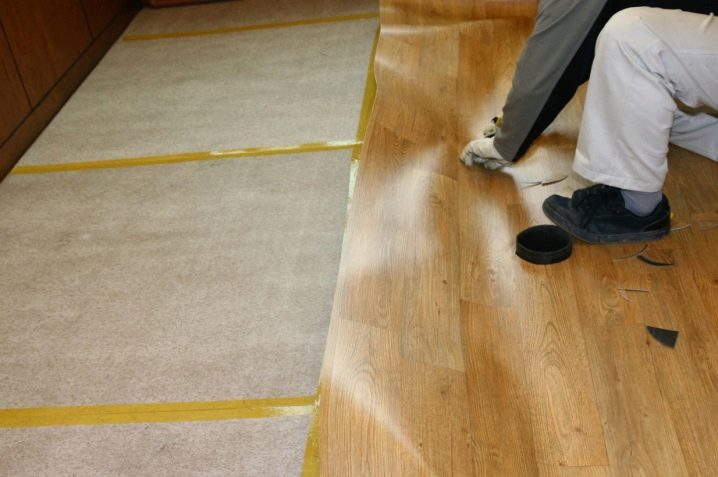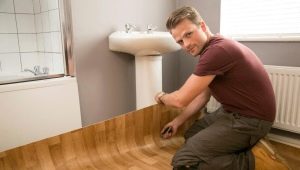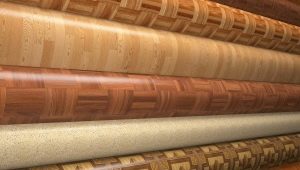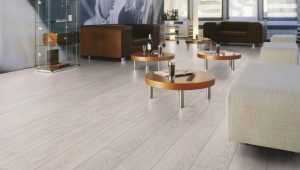Substrate under linoleum on concrete floor
Linoleum belongs to the budget and versatile types of flooring. Choosing among the variety of types of linoleum and proceeding directly to laying, many are faced with the problem of determining the method of laying the coating on the floor - with or without a substrate. To make the right choice, you need to know what the substrate is and what it is for.
Special features
The substrate is a special material in the form of sheets or rolls, which is laid directly on the floor. Thus, the substrate separates the subfloor with a clean layer of linoleum.
The intermediate layer should be laid down on a surface corresponding to the following characteristics:
- it should not contain any traces of old paint or dried glue, greasy and oily stains;
- the base under the linoleum must be solid, smooth and strong enough;
- In order to avoid the appearance of mold and deterioration of the top layer of the floor covering, it is necessary to lay the intermediate layer in a completely dry state and to prevent the ingress of moisture in the future.
The use of an insulating layer between the concrete floor and linoleum significantly extends the service life of the latter, which saves money on repairs.
The base, laid under the linoleum, has the following functionality:
- Most varieties of flooring must be laid on a perfectly flat surface. In the presence of even minor irregularities, the coating, especially if the choice fell on thin varieties of linoleum, can deform over time and even break. The substrate is a kind of buffer layer between the floor and linoleum, hiding minor defects in the concrete base and protecting the top layer from damage and deformations;
- all existing types of intermediate backing material are able to absorb extraneous sounds to varying degrees. Sound insulation will relieve the noise coming from the bottom of the apartment, besides, it can soften the sound of steps in the apartment;
- In addition to sound insulation, the substrate for linoleum is able to trap heat. Thermal insulation is particularly relevant for owners of apartments on the first floors above basements or non-residential premises, as well as for owners of houses on the ground. In such rooms, the floor is usually very cold and needs additional warming.
Do you need?
The feasibility of using the substrate for linoleum on a concrete floor follows from its main functions listed above. Therefore, it is necessary to use an intermediate layer when laying the floor covering in the following cases:
- cold floor - one of the most frequent reasons for choosing linoleum flooring on the substrate. This simple detail will not allow the penetration of cold from the lower unheated premises. With such a problem, flooring experts advise using substrates made from a combination of natural ingredients, such as wool, jute and linen, that can best keep the floor warm;
- Another popular reason for using the backing is uneven flooring. Today, hardly anyone can find a perfectly flat concrete floor. Therefore, with the help of an intermediate layer, small irregularities and cracks in the concrete floor screed can be hidden, which also protects against premature deterioration of linoleum;
- The use of the material underlay becomes an indispensable necessity when choosing linoleum without a base. Thin linoleum does not hide the flaws of the concrete floor and is not able to provide heat insulation, therefore, it needs an additional intermediate layer.
Other situations allow you to start laying the flooring without using the substrate.
Linoleum can be laid directly on the old floor, and even better if it belongs to modern varieties of flooring with a base of foam material or jute.
Kinds
In stores building materials intermediate layer for laying the flooring is represented by several types. The basis in the form of raw materials for their manufacture gave each species its name.
Jute intermediate layer has a natural origin. It is made from the plant of the same name, which for a long time was used to produce products with a rough texture - bags, ropes, furniture fabrics, carpets or ropes. The positive properties of this variety include the ability to absorb moisture and gradually remove it, without leaving inside.
To protect the jute material from fire, mold or parasite attacks, it is subjected to special treatment with chemicals. Such material has a rather high cost, so it is not very popular.
Ground under cork linoleum or wood bark in a crushed form is also a product of natural origin. Cork material has high rates of sound and heat insulation, which affects its cost.
The disadvantages of this type of substrate include its susceptibility to deformation. If it is planned to install heavy furniture in a cork-equipped intermediate layer, then this arrangement should be the same until the next repair with the replacement of linoleum. Otherwise, heavy objects will leave unattractive dents on the floor with a cork base.
Linen substrate is also a completely natural material. Due to the excellent ventilating indexes, the base layer of flax does not allow moisture to accumulate and form mold. Like jute material, flax is treated with special insect repellents.
An intermediate layer of composite material, which contains jute and flax and sometimes felt in equal proportions, is very dense and durable. Thanks to a combination of several matters with different functions combined substrate is an excellent option for thermal insulation.
The combined types of substrates include the combination of cork crumb with bitumen or rubber. This combination improves the hydrophobic properties of the material and allows the intermediate layer to be laid without waterproofing.
A novelty in the field of construction is newly developed wood fiber material. Such a substrate is also called coniferous, since it is produced from compressed sawdust of coniferous trees. The material is characterized by the highest insulation performance of heat and sound, for which he managed to catch the fancy of many.
The intermediate layers of artificial origin are foamed substrates, which are usually made of polyethylene and polystyrene foam. These materials are made using different technologies, but they do not let heat through equally well.
Foamed materials are very popular due to the relatively low cost. but floors with such a substrate are too soft and easy to deform, which leads to a rapid loss of appearance of the floor.
Sometimes, in the production of foamed substrates, a foil layer is added to them, due to which the thermal insulating properties of the material increase by 5-7%.
Which one to choose?
Today, the best material that you can put under the linoleum, is considered to cork. Due to its cellular structure, the cork substrate behaves well in operation.
The air formed between the cells makes it possible to evenly distribute the load from the furniture installed on the floor over the entire surface of the coating. Also, many customers note that the cork intermediate layer perfectly isolates extraneous sounds from the lower floors, and in the cold season the linoleum on the cork base is quite warm and comfortable even when you are without shoes.
What to insulate?
In addition to the above substrates, which are able to keep the floor in the apartment warm, there are other heaters for linoleum on the concrete floor.
Floor insulation system underfloor heating is an innovation in the construction market. Such a system assumes that a heater or a special heating element is placed under the linoleum. There are several types of warm floor:
- film roll insulation consists of several layers. The optimal power of such insulation is 150 W / m2. It is capable of maintaining a temperature sufficient for heat of 30 ° C and will not allow the floor covering to melt;
- infrared warm floor is versatile and suitable for any type of linoleum. This variety is not afraid of moisture and fire, so it is ideal for laying on a balcony or loggia;
- cable insulation consists of a heating cable, which is powered from the network. Suitable for most floor coverings, quite durable, but for this type of binding screed;
- Heating mats or thermomats are a cloth in the form of fiberglass mesh with heating cables attached to it. Unlike the previous view, it can be mounted without a tie;
- water floor heating involves the use of a system of pipes through which coolant circulates. Due to the large number of pipes, this type of insulation is most suitable for installation in a private house. In the apartment of the old house such a heating system is unlikely to be established officially,but in many new buildings a warm water floor began to be provided at the stage of building a house.
Manufacturers Overview
When choosing a company that produces substrates for linoleum, you should first pay attention to domestic manufacturers. Technotex LLC is one of the most popular Russian firms for the production of heat-insulating and other materials for linoleum and offers a wide variety of textures. Jute substrate has a different thickness and density. The company also offers combined models from natural materials with the same parameters. Linen substrate can be ordered according to individual parameters.
According to customers, the best quality substrate for linoleum or laminate can be purchased from Portuguese or Spanish companies. Cork intermediate layers of the company Vintage Floor from Portugal Have an expensive price, but do an excellent job with their functions. Many buyers in their reviews appreciate the environmental friendliness of materials, although the thickness of 3 mm is not able to hide the too obvious flaws of the concrete floor.
Excellent quality substrates from natural materials noted in the German brand Steicowhich has existed for more than half a century. Constant experiments with tree combinations allow creating new versions of intermediate materials with the best characteristics. However, the cost of branded products is not affordable for everyone.
Among the artificial intermediate layers should be again noted products of domestic production. Company Petroform produces polyethylene material with a thickness of 5 mm, which is ideal for leveling the floor.
Despite its low cost, the material has good performance of vapor barrier and heat preservation, does not rot and does not absorb moisture.
The styling process: tips
The technology of laying linoleum with the substrate on the concrete has several stages.
The first thing to do is to prepare a concrete base or the so-called floor for laying the flooring. It is necessary to clean the floor surface of dirt and dust, to seal the gaps between the wall and the floor with cement or foam. In the same way, significant unevenness of the floor can be fixed.
Then from above it is necessary to put a waterproofing layer.Often, polyethylene strips are used for these purposes.
The next step is to perform a screed or leveling the floor. This stage can be performed in three ways:
- wet screed involves the use of various liquid compounds - concrete, cement or self-leveling mixture, which allow to level the surface of the base of the floor before laying the substrate and linoleum on it;
- dry screed floor is performed bulk materials, which are covered with a thick layer on the bottom of the floor. As a dry screed, there may be sand, expanded clay waste or fine-grained slags, over which sheets of gypsum sheets or plywood should be put. Unlike a wet screed, using the dry method will not waste time drying, hold the screed at low temperatures, but the cost of the material for a dry screed is 1.5 times more than for a wet screed;
- semi-dry floor screed involves the use of a mixture of sand and cement. The drying time of such a screed is less than that of a wet one, and the prices are quite reasonable. Therefore, often when repairing with the involvement of the working team, this method is chosen.
It is worth noting that floor screed can be made both on a concrete base and on wooden floor boards. After complete drying of the screed, you can start laying the substrate. To do this, spread the prepared material over the entire floor area. If time allows, it is better to leave the substrate unfolded for several days. Then all possible irregularities of the material will be straightened and form a smooth coating.
Excess material can be gently removed with a knife. If the substrate consists of several layers, then they should be interconnected with a mounting tape. Then you can proceed to laying linoleum. If possible, he also needs to be allowed to rest in bed and get rid of for several days. Laying linoleum is necessary from the angle in which the least will be furniture.
Do not forget about the direction of the pattern on the surface of linoleum.
If linoleum creeps more than one piece, then separate parts of the material must be joined and glued together. In this case, when calculating dimensions, in addition to allowances along the perimeter, allowance for the joint about 10 cm should be taken into account.
After laying the linoleum should remove excess at the edges, left in reserve. It is especially important to do this first in the corners of the room, and then around the perimeter.After that, you should wait another day until the laid material is completely unfolded and, if necessary, trim the excess. When the linoleum with the substrate has subsided, you can proceed to the installation of baseboards, which will be the final stage of laying the floor covering.
Learn more about how to choose a substrate for linoleum on a concrete floor, you will learn from the following video.
